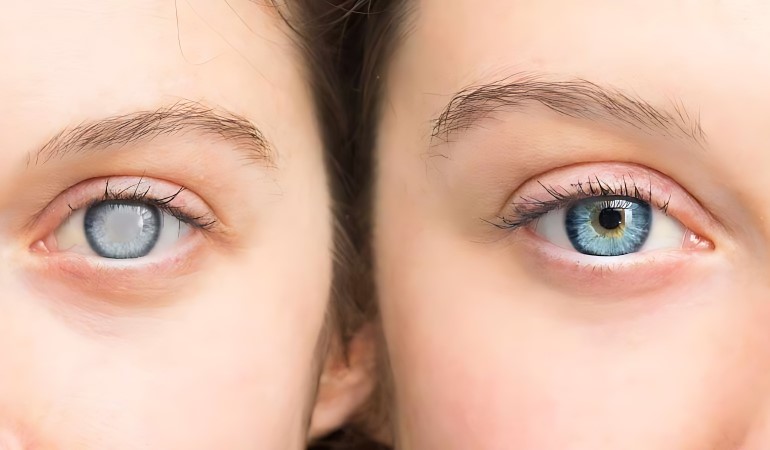Cataract Surgery

Cataract Surgery
Cataract surgery is a surgical procedure to remove the cloudy lens of the eye and replace it with a clear artificial lens. It is one of the most common and successful surgeries performed in the world.
Cataracts are a normal part of aging, but
they can also be caused by other factors
such as eye injury, diabetes, and certain
medications. Cataracts can cause blurred
vision, double vision, and halos around
lights.
Cataract surgery is usually recommended
when the cataracts are severe enough to
interfere with daily activities such as
driving, reading, or watching television.
It is a relatively simple and safe procedure, meaning that you can go home the same day.
To perform cataract surgery, the surgeon will make a small incision in the cornea, the clear front part of the eye. Then, the surgeon will use a variety of tools to break up and remove the cloudy lens. Finally, the surgeon will insert the new artificial lens into the eye. The surgery is usually painless and takes about 30 minutes to complete.
Cataract surgery is a very effective way to improve vision. In most cases, people who have cataract surgery experience a significant improvement in their vision and quality of life.
There are three main types of intraocular lenses (IOLs):
• Monofocal IOLs: Monofocal IOLs are the most common type of IOL. They focus light at a single distance, either far, intermediate, or near. Monofocal IOLs are typically used to correct distance vision, so people who receive monofocal IOLs may need to wear reading glasses to see clearly up close.
• Multifocal IOLs: Multifocal IOLs focus light at multiple distances, far, intermediate, and near. This can reduce or eliminate the need for glasses or contact lenses after cataract surgery. Multifocal IOLs are a good option for people who want to be able to see clearly at all distances without glasses or contact lenses.
• Toric IOLs: Toric IOLs correct astigmatism, a condition that causes blurred vision at all distances. Toric IOLs are a good option for people with cataracts and astigmatism.
Which type of IOL is best for you depends on your individual needs and preferences. Your eye doctor can help you choose the right IOL for you.
Here are some additional tips for preparing for and recovering from cataract surgery:
Before surgery, talk to your doctor about any medications you are taking. Some medications may need to be stopped or adjusted before surgery.
On the day of surgery, arrive at the hospital or surgery center early, as instructed by your doctor.
After surgery, you will need to wear an eye patch or shield for a few days.
You will also need to use eye drops to prevent infection and inflammation.
Most people are able to return to their normal activities within a few weeks of surgery.
However, it is important to avoid strenuous activities for a few weeks after surgery.
Be sure to follow your doctor's instructions carefully after surgery.